Shri Kurma natha which is the second avatar of Lord Vishnu, Kurma avatar (Tortoise) and this is the only temple of Kurmanatha in India.
The moolasthanam (central piece) is considered to be large saligrama. The Kurma (Turtle) is known as Shri Kurmam in the ‘Sampradayam’. The image is not a sculpture crafted by man, but the fossil of an actual (large-size) turtle, which must have paddled on to the ‘kshetram’ where the shrine has been built. The head of the diety is in the form of a Kurma (tortoise) and is represented by a Vishnu namam, the tail being represented by a Saligrama presented by Adi Sankaracharya. The artistic beauty of the temple lies in the carvings of Vishnu and other diety statues in a glorious way of architecture. There is a mandapam in front of the temple on Lion pillars. One unique feature of this temple is that it has Dhwajastambha in the front and back of the temple. That is because the deity faces the back of the temple on the west.
Legend : According to inscriptions in the temple dated 1281 A.D, the holy place of Kürmakshetra, was actually reestablished by Shri Ramanujacharya under the influence of Jagannatha Deva at Jagannatha Puri, Orissa. Later the temple came under the jurisdiction of the King of Vijayanagara. The deity was worshiped by the Vaishnavas of the Madhvacharya Sampradäya. Some Oriya inscriptions are said to be written by Shri Narahari Teertha, who was a successor to Madhavacharya. He later became the ruler of Kalinga Province (ancient Orissa) and fought with the Sabaras, and saved the temple of Kürma. Narahari Teertha was a very religious and powerful king who died in the Saka Era 1203. The temple was constructed and dedicated in the holy name of Yogananda Narasimhadeva. This temple was built in the Orissa temple architecture style.

 Doleswor Mahadev Temple
Doleswor Mahadev Temple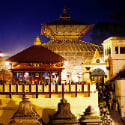 Pashupatinath temple
Pashupatinath temple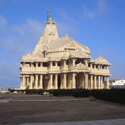 Somnath
Somnath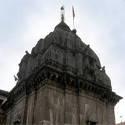 Parli Vaijnath
Parli Vaijnath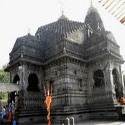 Shri Tryambakeshwar of Kakanwada
Shri Tryambakeshwar of Kakanwada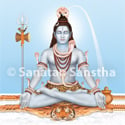 Grishneshwar
Grishneshwar